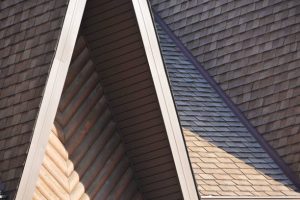Although residential and commercial roofs serve the same purpose of protecting your home or property from the elements, there are some differences. The most significant difference between commercial roofing systems and residential roofing is the slope of the roof which is determined by the size of the building. Residences have a steeper slope roof than commercial roofing systems. They use materials like architectural tile, asphalt shingles, slate, and other roofing materials. Commercial roofs are typically flatter or less sloped due to the greater size of commercial buildings. There are many options for commercial roof materials. These choices depend on the structure of the building as well as other factors such climate conditions (e.g. extreme heat or cold) and if the surface is to withstand heavy foot traffic.
Commercial Roofing Materials
Commercial roofing contractors stay on top of developments in commercial roofing technology. They are well-versed in choosing the right roofing solution for each project based on its needs. New commercial roofing products that are resistant to extreme temperatures and maximize environmental efficiency have been developed in recent years. This helps to reduce storm water runoff, heating, and cooling costs.
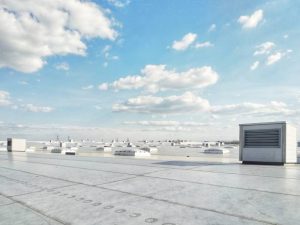
Choosing a Commercial Roofing System
There are factors to consider when choosing the type of commercial roofing system you’ll need for your business, whether it is a brand new business or an existing business that needs a roof replacement. Because different kinds of businesses have specific needs, you need to take into account the type of facility that you work with. It will be easier to make a decision if you are familiar with the different types of commercial roofing systems available.
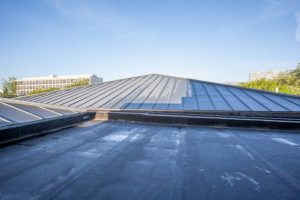
Shape of Commercial Roofs
Commercial roofing systems must consider the roof’s slope. Roofs are classified as Low Slope Roofs (or Flat Roofs) and Steep Slope Roofs.
- Low-slope Roofs: These roofs are commonly found in warehouses, large-box stores, and shopping malls. There are many options for flat roofs with this roofing system: EPDM, PVC, and TPO.
Steep Slope Roofs: These roofs are often used on single-family and multi-family houses more than on commercial properties. Popular roof materials for this type of roofing are metal, shingles and slate.
Types of Commercial Roofing Systems
Once you’ve identified the slope of the roof, you can choose the right type of roofing system to meet your needs. This is important so that you don’t take any financial risks buying the wrong type of roof. These are the most popular commercial roofing systems.
Single Ply Roofing
These roofs are made from TPO, PVC, or EPDM. These roofs are extremely flexible and robust materials that are preferred by many building owners. They resist cracking, peeling, and other weathering. They are intended to be used in one layer. The single-ply roofing industry has two main types: thermoplastic and thermoset membranes.
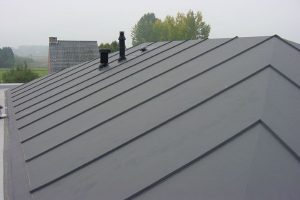
TPO (Thermoplastic Polyolefin)
This material is used most often on North American low-slope roofs. It includes reinforced roof sheets with heat-welded seams that are highly reflective and reinforced roof sheets. TPO is a single-ply membrane made of polypropylene or ethylene-propylene rubber. They have been polymerized together. TPO belongs to the thermoplastic membrane group and is available in many colors, but the most popular ones are white, grey, and tan. There are several ways to install the membrane, including adhesive, mechanically attached and ballasted.

PVC (Polyvinyl Chloride)
PVC roofing material consists of two layers made of PVC and a polyester reinforcement scrim between. The membrane is UV-resistant because the top ply has additives. The bottom ply, which is usually darker in color and has plasticizers to allow for greater flexibility, makes installation much easier. A PVC membrane has many other benefits, including durability, fire resistance, and longevity. PVC can also be weldable, which means that it can be welded onto another sheet to make it watertight. You can make PVC sheets look like a standing seam roof system. This is done by welding a prefabricated rib to the surface. It costs much less. PVC membranes can also be recycled and reused in new sheets.
EPDM Roofing (Ethylene Propylene Diene Monomer)
What is EPDM roofing? The letters are for “ethylene propylene monomer,” an obscure chemical compound known for its toughness and elasticity. EPDM roofing is a material that can withstand the intense ultraviolet light and all of the sun’s harmful rays. EPDM rubber roofing, which is a popular commercial roofing material, is highly sought-after because of its low cost and high resilience. EPDM roofing membranes are made from natural gas and oil. EPDM roofing material can be found in low-slope commercial buildings around the globe.
Modified Bitumen Roof Systems: This modified bitumen roof is made from asphalt and a special chemical polymer that provides flexibility and resistance to temperature. It can be applied in many layers in a variety of ways, including hot-mopped asphalt or torch-applied adhesives. This makes it an option for installation in all four seasons. To form a secure bond, the seams are melted together. They are resistant to fire, wind, and hail, which makes them immune to damage from a storm.
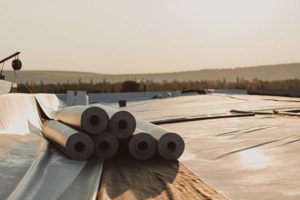
Built-Up Roofing Systems
Built-up roofing is one of the oldest roofing systems on the market. It has 3-5 layers to provide enhanced protection in extreme climates with high and low temperatures. Built-up roofing, also known as BUR, has been around more than 100 years.
Metal Roofs
Metal roofing is well-known for its beauty, durability, and longevity. Many building owners love the durability and look of metal roofs. They can be used on steep and low-slope roofs. Many homeowners and builders are choosing metal roofs over traditional shingle roofs because of their longer life span and greater durability.

Liquid Applied Roofing
Liquid applied roofing membranes are made in place using resin and reinforcing polyester. Because it can reach areas that are difficult to reach, it offers superior waterproofing. You can spray it on or roll it, often in two separate coats. Because liquid roofing is not invasive, it doesn’t cause any odors or create invasive disturbances. It is a great option for businesses that need to remain open during construction.
Roof Coating Systems: A fully adhered membrane is what makes this roof coating system. It is flexible and can return to its original form. There are many roof coatings available, but silicone and acrylic are the most popular. Coatings are best suited to metal roofs. They can keep buildings cool, reduce energy use, prevent leaks, and prolong the life of commercial roofs.
Green Roofs
Green roofs may not be suitable for all spaces. They can be useful in reducing energy costs by providing natural insulation. They also create pleasant spaces for animals and people. The general benefits of green roofs include improved air quality and a reduction in the Urban Heat Island Effect. Nations Roof(r), has installed numerous green and vegetative roofing systems throughout the country.

Photovoltaic (PV) Solar Panels
Solar panels convert sunlight into usable energy by absorbing it. Photovoltaics can be used to roof, resulting in long-term cost savings, particularly for those living in areas with high sun. Nations Roof(r), a company that installs rooftop photovoltaic systems, can help you to maintain the roof integrity and keep your building watertight.
Steep Slope
Steep slope roofing is a type of roofing material that can be used on roofs with slopes greater than 3:12. This style is most commonly found on residential properties. However, it can also be seen on commercial buildings, such as hotels and universities. There are many materials you can use, including asphalt composition roll, fiberglass 3-tab, fiberglass laminate (architectural), shingle and specialty asphalt shingle.
